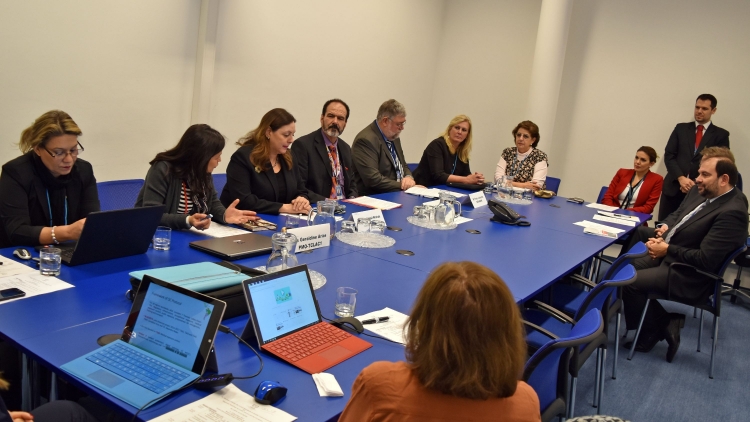The IAEA’s technical cooperation (TC) programme supports Member States’ efforts to ensure the effective use of radiation in medicine and consideration for radiation protection of workers, patients and the general public when radiation sources are used and nuclear technologies are applied.
From 4 to 8 December 2017, experts from Argentina, Brazil, Costa Rica and Nicaragua met at IAEA headquarters in Vienna to finalize a revised handbook on quality control protocols for diagnostic radiology in Latin America and the Caribbean as part of an ongoing regional technical cooperation project[1].
The meeting was also attended by a representative from the Pan American Health Organization’s (PAHO) Radiological Health Program. PAHO is the Regional Office for the Americas of the World Health Organization (WHO) and the specialized health agency of the Inter-American System.
Collaboration between the IAEA and PAHO/WHO is longstanding, and governed by the terms of a new Practical Arrangement signed on 1 June 2017 on the margins of the first International Conference on the IAEA Technical Cooperation Programme. This Arrangement establishes a framework for cooperation in areas of common interest including radiological safety and security and quality assurance in radiation medicine.
In his opening address to participants, Luis Longoria (Director – Division for Latin America and the Caribbean, IAEA Department of Technical Cooperation) stated, “Quality control of diagnostic equipment is one of the most important elements of radiation protection in medicine to avoid unnecessary exposure of patients.”
As Ileana Fleitas (Technical Officer, PAHO) noted, “When the IAEA and PAHO work together to develop protocols and guidelines, we see greater support from and implementation by national authorities and professional societies. In this case, that will mean better use of radiological equipment for early and accurate diagnosis of patients, and stronger radiation protections for patients and workers.”
Throughout the week, project participants developed a new, comprehensive publication of modern protocols to account for recent technical innovations in medicine, the increased use of digital applications and tools, and the introduction of new equipment for quality control and measurement. Technical officers from the IAEA divisions of Radiation, Transport, and Waste Safety (NSRW) and Human Health (NAHU) provided technical support.
When the IAEA and PAHO work together to develop protocols and guidelines, we see greater support from and implementation by national authorities and professional societies. In this case, that will mean better use of radiological equipment for early and accurate diagnosis of patients, and stronger radiation protections for patients and workers.



